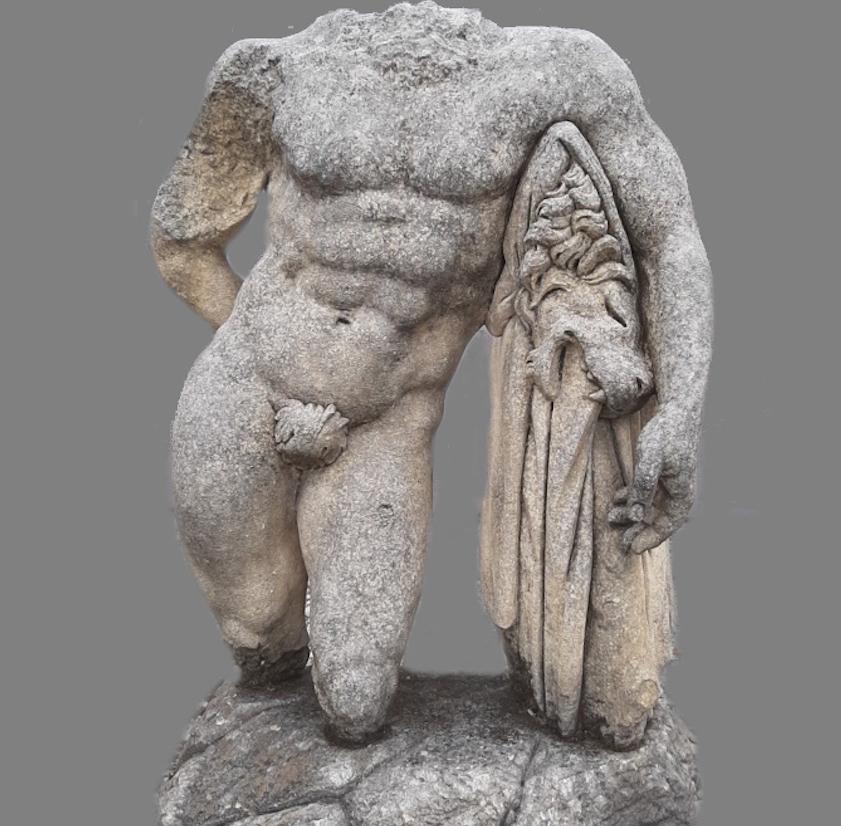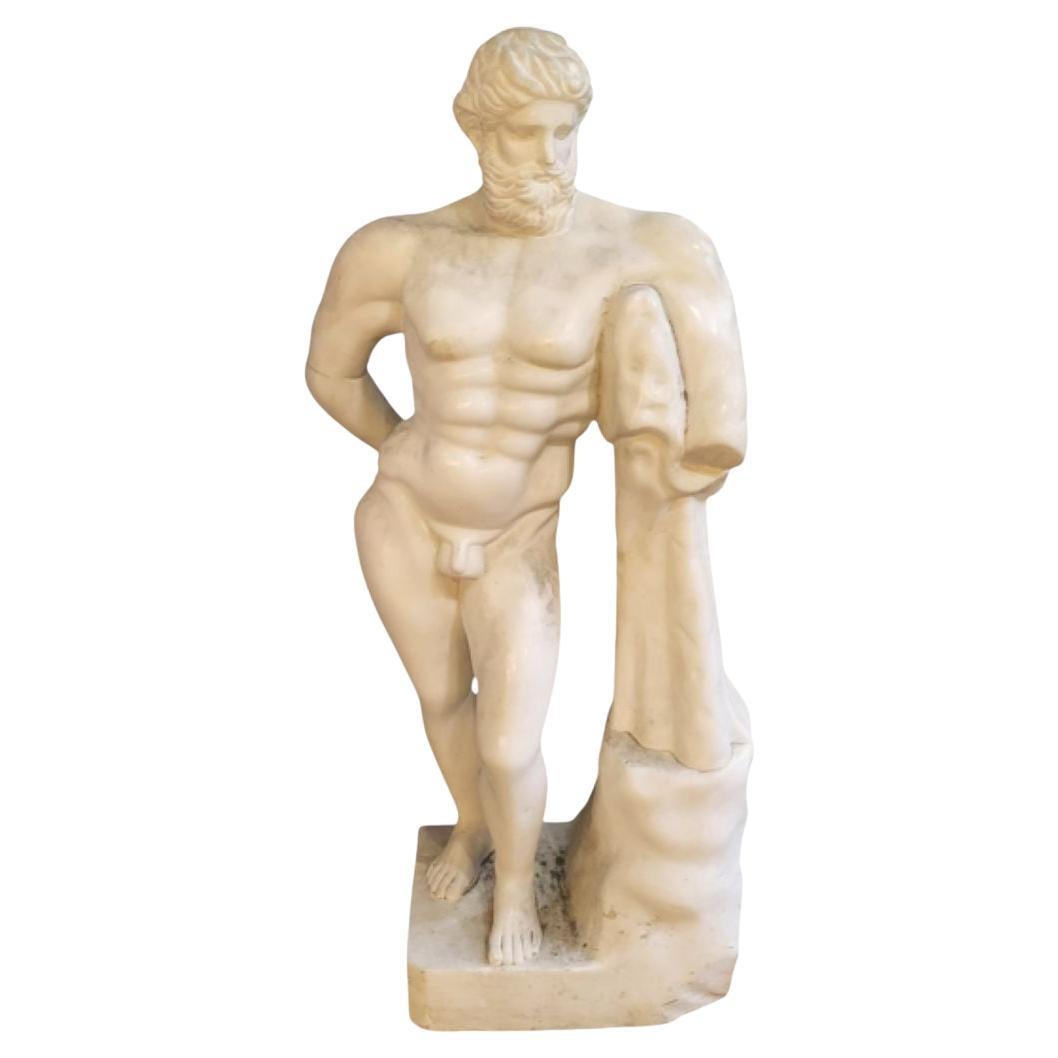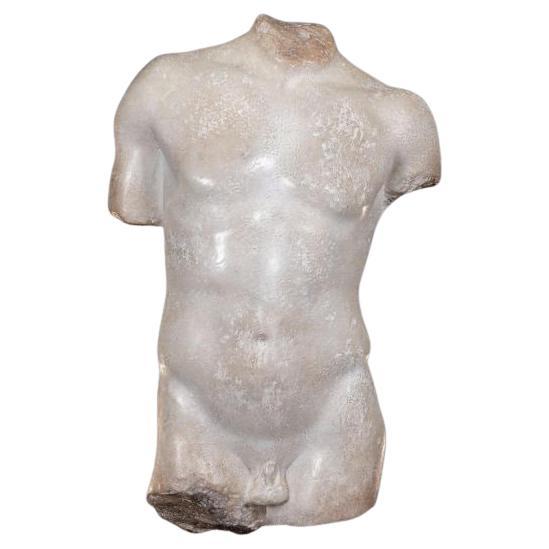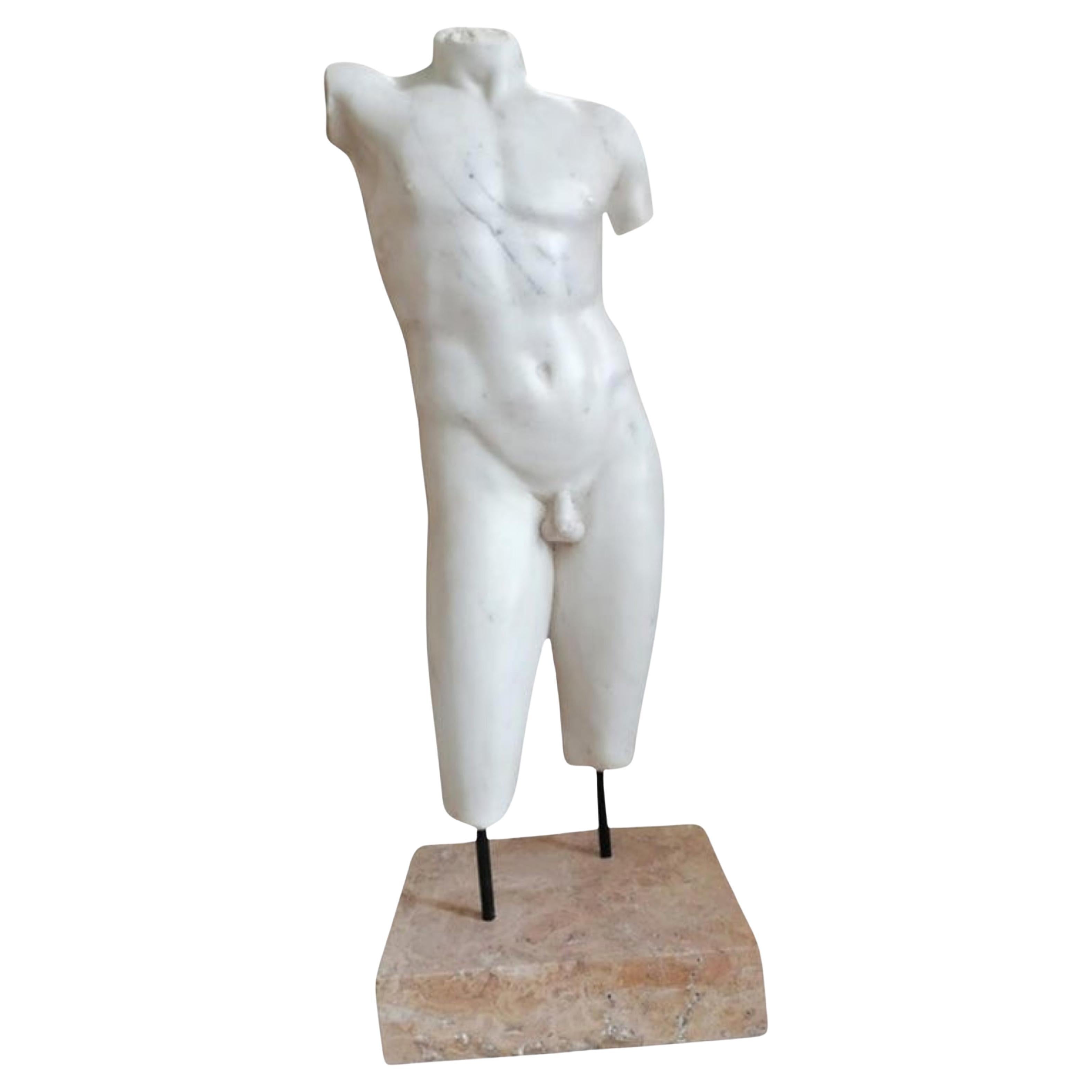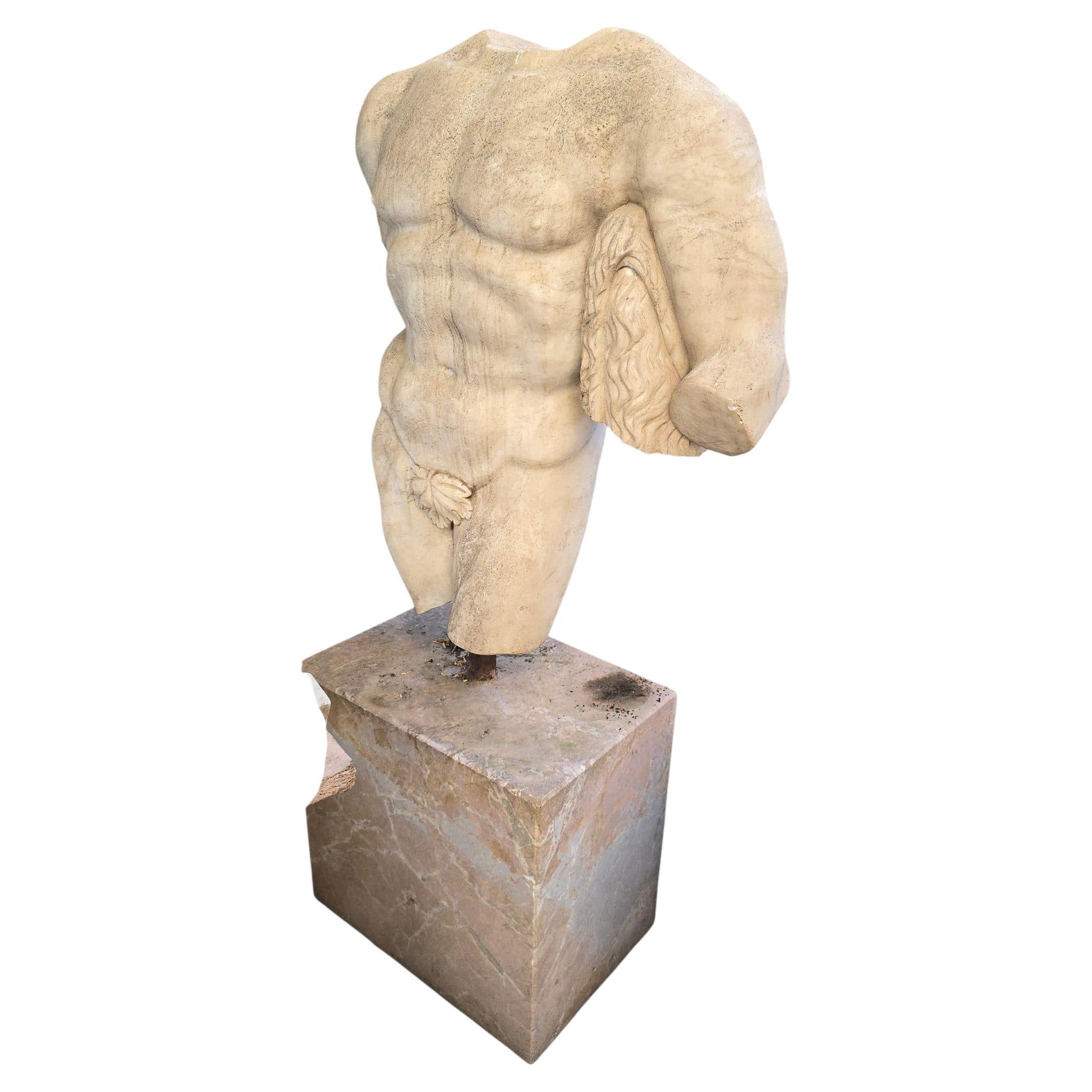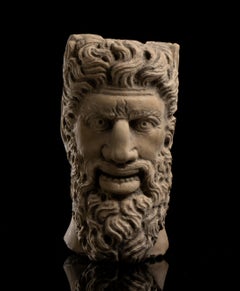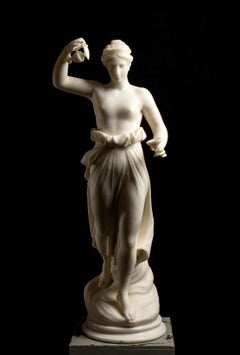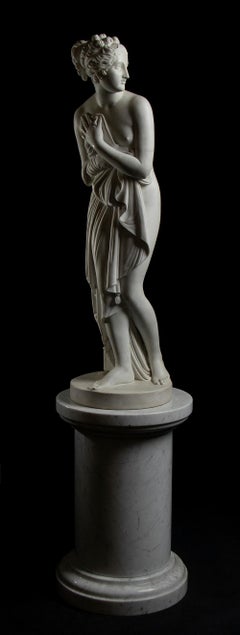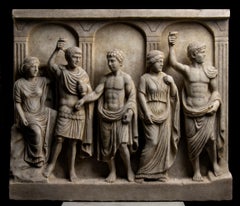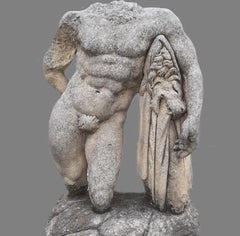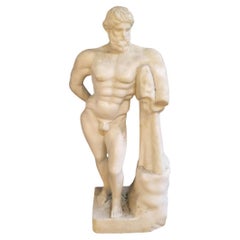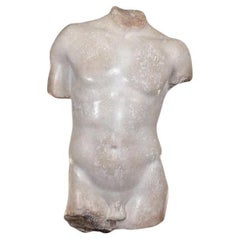Items Similar to White Carrara Marble Sculpture of Hercules Italian 20th Century
Want more images or videos?
Request additional images or videos from the seller
1 of 13
UnknownWhite Carrara Marble Sculpture of Hercules Italian 20th Centuryafter 1900
after 1900
$17,839.65
$29,732.7640% Off
£13,274.54
£22,124.2340% Off
€15,000
€25,00040% Off
CA$24,510.70
CA$40,851.1740% Off
A$27,356.06
A$45,593.4340% Off
CHF 14,392.41
CHF 23,987.3540% Off
MX$332,300.55
MX$553,834.2640% Off
NOK 182,457.42
NOK 304,095.7140% Off
SEK 170,757.29
SEK 284,595.4840% Off
DKK 114,189.26
DKK 190,315.4440% Off
About the Item
an important and impressive white marble sculpture of Hercules as torso. The figure standing in contrapposto position wearing on the left shoulder a rest of a drapery with a sculpted lion of head as symbol of Hercules.
Probably carved in the central of Italy, Tuscany of Rome in the first half of the 20th century this impressive sculpture belong to the observer the typical and traditional accent of the classical and traditional school with significants elements of Ellenistic and Roman school.
Standing on a squared marble base in contrapposto position on two iron pins; Contrapposto is an Italian term that means "counterpoise". It is used in the visual arts to describe a human figure standing with most of its weight on one foot, so that its shoulders and arms twist off-axis from the hips and legs in the axial plane.
First appearing in Ancient Greece in the early 5th century BCE, contrapposto is considered a crucial development in the history of Ancient Greek art (and, by extension, Western art), as it marks the first time in Western art that the human body is used to express a psychological disposition. The style was further developed and popularized by sculptors in the Hellenistic and Imperial Roman periods, fell out of use in the Middle Ages, and was later revived during the Renaissance. Michelangelo's statue of David, one of the most iconic sculptures in the world, is a famous example of contrapposto.
The head of the lion symbol of the hero of Roman mythology, found by the goddess Minerva who brought him to Juno, claiming that he was an orphaned child abandoned in the woods and in need of nourishment. Juno nursed Hercules at her breast until he bit her nipple, at which point she pushed him away, spilling her milk into the night sky and forming the Milky Way. She then returned the child to Minerva and told her to care for the child herself. By nursing the child at her breast, the goddess inadvertently imbued him with further strength and power.
- Creation Year:after 1900
- Dimensions:Height: 41.34 in (105 cm)Width: 17.72 in (45 cm)Depth: 9.85 in (25 cm)
- Medium:
- Period:
- Condition:
- Gallery Location:Roma, IT
- Reference Number:1stDibs: LU1350116528562
About the Seller
4.9
Gold Seller
Premium sellers maintaining a 4.3+ rating and 24-hour response times
Established in 1998
1stDibs seller since 2020
97 sales on 1stDibs
- ShippingRetrieving quote...Shipping from: Roma, Italy
- Return Policy
Authenticity Guarantee
In the unlikely event there’s an issue with an item’s authenticity, contact us within 1 year for a full refund. DetailsMoney-Back Guarantee
If your item is not as described, is damaged in transit, or does not arrive, contact us within 7 days for a full refund. Details24-Hour Cancellation
You have a 24-hour grace period in which to reconsider your purchase, with no questions asked.Vetted Professional Sellers
Our world-class sellers must adhere to strict standards for service and quality, maintaining the integrity of our listings.Price-Match Guarantee
If you find that a seller listed the same item for a lower price elsewhere, we’ll match it.Trusted Global Delivery
Our best-in-class carrier network provides specialized shipping options worldwide, including custom delivery.More From This Seller
View AllSculpture Figurative White Marble Portrait of a Sylenus Classical Greek 19th
Located in Roma, IT
A portrait of a Silenus, ( also know as satyr) carved in white marble probably in central Italy in the 19th Century.
The head despite a man with long hears in equine style with also ...
Category
19th Century Other Art Style Figurative Sculptures
Materials
Marble
Antonio Canova Ebe Aprés Ebe White Marble Sculpture 19th Century Italian
By Antonio Canova
Located in Roma, IT
An important grand tour Antonio Canova Ebe (Aprés), carved in white marble by an Italian sculptor artist in the 19th century from a block of white marble.
The work depicts the go...
Category
19th Century Other Art Style Figurative Sculptures
Materials
Marble
Antonio Canova (After) Marble Sculpture Of Venus Italica On Marble Base
By Antonio Canova
Located in Roma, IT
a superb scale size of the Venere italica, the famous and notable sculpture carved by Antonio Canova in the 19th century standing on circular Carrara marble base.
At the top of his ...
Category
19th Century Other Art Style Figurative Sculptures
Materials
Marble
Monumental Marble Sculpture Relief Roman Depicting The Apotheosis of Augustus
Located in Roma, IT
A very unusual and interesting monumental marble relief, hand carved in Italy in the early XX century that shown an interesting scene: the Apotheosis of the emperor Augustus. Apotheo...
Category
Early 20th Century Other Art Style Figurative Sculptures
Materials
Marble
Antonio Canova (After) Marble Sculpture Of Venus Italica Uffizi Museum 19th
By Antonio Canova
Located in Roma, IT
a superb scale size of the Venere italica, the famous and notable sculpture carved by Antonio Canova in the 19th century. At the top of his notability and influence the King Ludovico...
Category
19th Century Other Art Style Figurative Sculptures
Materials
Marble
Polychrome Marble Sculpture Portrait Emperor Marcus Aurelius Italian 19th
Located in Roma, IT
A portrait head of the Roman Emperor Marcus Aurelius, carved in Carrara marble, with deeply cut curls and detailed classical roman accents in the hair and in the shave; the carefull...
Category
19th Century Other Art Style Figurative Sculptures
Materials
Marble
You May Also Like
Hercules Italian Stone Sculpture of Classical Torso with Base
Located in Rome, IT
This reproduction of a classical Hellenistic sculpture of Hercules .
A timeless piece for interior and a garden decoration.
We can raise with a base on request .
Category
20th Century Academic Figurative Sculptures
Materials
Limestone
Hercules Italian Stone Sculpture of Classical Torso with Base
Located in Rome, IT
This reproduction of a classical Hellenistic sculpture of Hercules .
A timeless piece for interior and a garden decoration.
We can raise with a base on request .
Category
20th Century Academic Figurative Sculptures
Materials
Limestone
Realistic Marble Statue of Hercules
Located in London, GB
A Realistic Marble Statue of Hercules after the Ancient Model
Stands at almost 1 meter Tall
Category
Mid-20th Century Unknown Classical Greek Figurative Sculptures
Materials
Marble
Sculpture in the Taste of Antiquity, White Marble Patina, White Marble Effect.
Located in Saint-Ouen, FR
Small-scale model of our beautiful sculpture in the Taste of Antiquity. This bust represents Hermes, son of Zeus and messenger of the gods. It is a fragment of a statue from the Impe...
Category
21st Century and Contemporary French Modern Busts
Materials
Resin
Magnificent "Dorso Masculino" Sculpture in Carrara Marble the, 20th Century
Located in Madrid, ES
Magnificent "Dorso Masculino" sculpture in Carrara marble from the 20th century.
Italy
Measures: H. 108cm x 37cm
Perfect conditions.
Category
Early 20th Century Italian Baroque Figurative Sculptures
Materials
Carrara Marble
Large Classical Marble Torso of Hercules on Marble Base, Early 20th Century
Located in Madrid, ES
Impressive classical marble torso of Hercules, carved in Italy during the first half of the 20th century. The sculpture emphasizes the heroic anatomy and powerful presence of the myt...
Category
Vintage 1930s Mounted Objects
Materials
Marble
More Ways To Browse
Legs Sculpture
Marble Sculpture Black
White Marble Sculptures
Marble Figural Sculpture
Italian Classical Sculptures
Twisted Sculpture
Marble Rome
Human Leg
Marble Sculptures Roman
White Carrara Marble Sculptures
Italian Renaissance Marble
Ancient Greek Marble
Roman Wood Sculptures
Roman Head Sculpture
White Marble Sculpture Statue
Greek Sculpture Heads
Lion Head Sculpture
Marble Goddess
